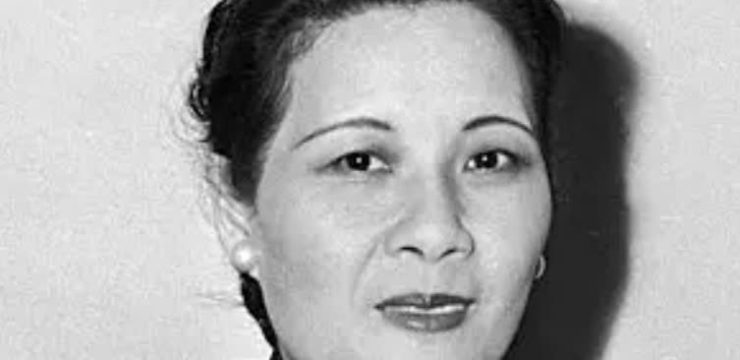Just before noon, the vibrant streets of Phnom Penh slowed to a pause as an unsettling scene began to unfold in an otherwise overlooked corner of the city. Amid the hum of motorcycles and the echo of street vendors, a woman was discovered lying motionless in a vacant lot—emaciated, exhausted, and barely clinging to consciousness. The discovery sparked a wave of questions that lingered in the minds of those who gathered around: Who was she? How long had she been there? And how had no one noticed her sooner, in the heart of one of Southeast Asia’s most bustling capitals? What began as a small incident quickly turned into a reflection of something larger—the invisible struggles that persist within cities growing faster than their capacity for compassion.

According to authorities, the incident occurred near Keng Road and Win Win Boulevard in Sangkat Bak Kheng, Khan Chroy Changvar, a district known for its rapid development and construction. Around 11:00 a.m., local officials responded to a call reporting a woman lying unconscious in a dusty lot adjacent to a cluster of half-built apartments. Witnesses estimated her age to be around thirty. She was found weak but still breathing, her frail body showing clear signs of prolonged exhaustion and hunger. The scene was both tragic and haunting—a stark reminder that even in cities filled with movement, there are lives that seem to fade quietly into the background.
One of the first to notice her was a passerby who had seen her earlier that morning. Around 5:30 a.m., on his way to work, he caught sight of her lying still near the edge of the lot. At first, he assumed she was resting or waiting for someone, but when he passed again hours later and saw her in the same position, alarm set in. Fearing the worst, he quickly alerted emergency services. Within minutes, a rescue team arrived and rushed the woman to Prek Phon Health Center for urgent medical care. Paramedics later reported that she was severely malnourished, with evidence suggesting she might have recently been discharged from a hospital but lacked proper support afterward. Her condition, while stable, revealed the fragility of those living on the margins of urban life—individuals who often fall through the cracks unnoticed until it’s almost too late.
For Phnom Penh residents, this episode struck a nerve. The city has transformed rapidly in the past decade, with modern skyscrapers, cafes, and luxury developments reshaping its skyline. Yet beneath the progress lies a quieter, more painful story—one of poverty, displacement, and inequality. As cities grow, so too does the distance between those who thrive and those who struggle to survive. Experts say this woman’s plight is emblematic of a growing issue in urban environments across Southeast Asia: how to care for the most vulnerable when the pace of modern life leaves little room for empathy.
Sociologists point out that this isn’t an isolated case. The combination of economic migration, rising housing costs, and limited healthcare infrastructure often pushes individuals—especially women and the elderly—into precarious circumstances. Many who leave hospitals after treatment find themselves without families to care for them or communities that can offer support. When illness or hardship strikes, they become invisible to the rest of society. In many cities, it’s not uncommon to see people sleeping in doorways, resting under bridges, or wandering without direction. Most passersby look away, too preoccupied with their own lives to intervene.
This collective detachment raises a difficult question: When did cities, built on the promise of opportunity and connection, become places where suffering could go unseen for hours, even days? The woman’s discovery highlights the paradox of urban life—crowds everywhere, yet isolation everywhere too. It’s easy to believe that someone else will help, that someone else will call for aid. But when everyone assumes someone else will act, no one does.
Public health experts in Phnom Penh have since called for stronger social support systems to prevent such situations. They emphasize that compassion and awareness are as essential to a healthy city as infrastructure and development. Simple measures, such as community watch programs or increased collaboration between local authorities and healthcare centers, could ensure that those in need are identified and assisted more quickly. Education campaigns could also encourage citizens to report distress or unusual situations rather than ignoring them out of fear or indifference.
What makes this case especially poignant is how ordinary it seemed at first. There were no signs of violence, no cries for help, just a silent figure lying under the midday sun. And yet, within that silence was a powerful message—a reflection of what happens when compassion fades from daily life. In many ways, her story serves as both a warning and a call to action. It reminds us that empathy must not be a luxury reserved for rare moments of crisis but a daily habit of noticing, caring, and responding.
The city’s local government has since vowed to follow up on the woman’s recovery and investigate her background to locate any family or support network. While her identity remains unknown, community members have expressed hope that she receives proper care and a safe place to recover. For many, this small act of concern has reignited conversations about the need for stronger community bonds in Phnom Penh—a city where progress often overshadows humanity.
As evening fell and the sun dipped below the skyline, the lot where she was found grew quiet again, blending back into the city’s rhythm. Yet the image of her frail figure lying there lingers in the minds of those who saw her. It serves as a reminder that behind every bustling street and every crowded marketplace, there are hidden stories of struggle waiting to be seen.
Ultimately, this incident goes beyond one woman’s suffering. It speaks to the heart of urban life—the balance between progress and compassion, between development and humanity. Cities are living organisms, and their strength depends not only on roads and buildings but on the kindness of their people. In Phnom Penh, as in cities across the world, one simple truth endures: the difference between tragedy and survival often lies in whether someone chooses to stop, look, and care. Compassion doesn’t require wealth or power—it only requires awareness. And sometimes, that awareness can mean the difference between life and death.





